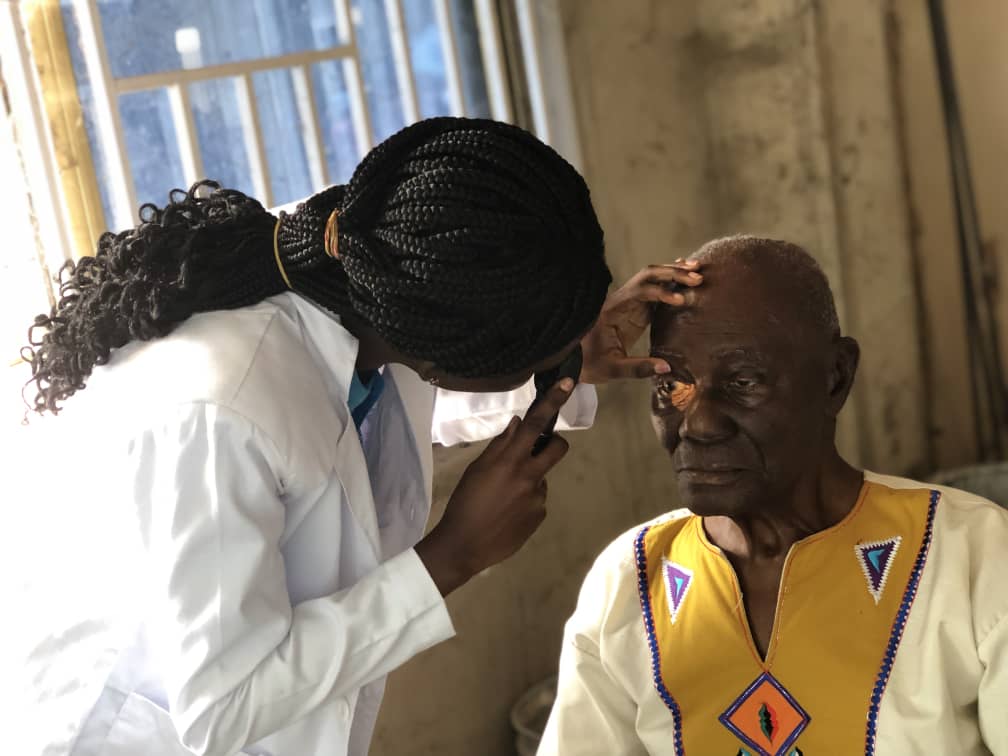Hello there,
And welcome to my blog, it my fervent hope that you and your families are safe and sound and continuously adhering to the protocols put in place to help combat the pandemic.
Today i would like to discuss two risk factors for Glaucoma and the possibility they having effects on each other.
Introduction
Glaucoma is a sight-threatening condition whose diagnosis involves different variable measurements and tests to diagnose and treat. The condition in itself has not cure as at now and can only be managed with individuals having better prognosis with early detection.
Myopia is refractive error which prevents individuals with condition from seeing things at far clearly unless with the help of spectacles, contact lenses or refractive surgery. Interestingly having myopia is considered a risk factor for glaucoma. Individuals with high myopia tends to have their fundus showing similar patterns as observed in some glaucoma cases, which may lead them to be misdiagnosed as glaucoma patients or undiagnosed when they truly may have glaucoma.
On major criteria for which glaucoma may be looked at is an increased in the intraocular pressure of the eye, which is associated with apoptosis of the nerve cells which eventually lead to loss of visual field and ultimately sight.
Research Idea
Now with Myopia and IOP been both risk factors for glaucoma, what are the chances of they having any kind of effect on each other to impact the diagnosing of an individual with glaucoma. Myopia causes changes in the sclera structure of the eye, making it become thinner and weakening the optic nerve head. Which is the reason why lamina dots may seen in high myopic cases.
However, individual with high IOP in glaucoma cases also tend to show this sign. The question is, is it in anyway possible that having myopia could actually cause an increase or change in IOP? If so does it make it a good thing to still focus on IOP as strong variable for glaucoma? How do we understand these scleral changes that come with myopia and how these changes including any chemicals or enzymes released during the process affecting IOP?
In recent studies done on the zebra fish in trying to understand myopia progession, it was found that the low density lipoprotein receptor - related protein 2 gene may provide us with more insight into understanding glaucoma. The gene is expressed on the retinal pigmented epithelium and may have the potential of mediating the emmetropization process. Again in the zebra fish with the help of the wingless-related integration site and HB-EGF factors, it is able to repair damage to the retina including stretches as seen in myopia and apoptosis as seen in glaucoma cases.
Understanding more about how this fish is able to do this may not only help us find a solution to myopia but also glaucoma. Interestingly the bugfish a strain of the zebra fish whose eyes are quite large as could be compared to myopia cases is known to have a very high intraocular pressure. The question does the structure of the eye as similar to myopia has anything to do with this IOP or it is just a genetic disorder?

Conclusion
The prevalence of myopia and high myopia are increasing globally at an alarming rate. According to a study by Holden et al. (2016), the prevalence of myopia was determined to be 28% in 2010. It was projected to increase to 33% and 50% in 2020 and 2050 respectively. High myopia is associated with pathologic conditions such as retinal damage, cataract and glaucoma. Understanding Myopia now and finding a solution to the problem may be what will save many from having to undergo refractive surgery.
Thanks for reading, stay safe and have a great week, Special thanks to my mentors and supporters @mcsamm, @tj4real, @armandosodano, @delilhavores, @gentleshaid, @agmoore. For further reading;
Harper, A.R. and Summers, J.A. (2015). The dynamic sclera: Extracellular matrix remodeling in normal ocular growth and myopia development. Experimental Eye Research, 133, pp.100–111.a
Holden, B.A., Fricke, T.R., Wilson, D.A., Jong, M., Naidoo, K.S., Sankaridurg, P., Wong, T.Y., Naduvilath, T.J. and Resnikoff, S. (2016). Global Prevalence of Myopia and High Myopia and Temporal Trends from 2000 through 2050. Ophthalmology, 123(5), pp.1036–1042.
The impact of myopia and high myopia: report of the Joint World Health Organization Brien Holden Vision Institute Global Scientific Meeting on Myopia, University of New South Wales, Sydney, Australia, 16–18 March 2015
Gestri, Gaia et al. “The visual system of zebrafish and its use to model human ocular diseases.” Developmental neurobiology vol. 72,3 (2012): 302-27. doi:10.1002/dneu.20919
Collery RF, Veth KN, Dubis AM, Carroll J, Link BA (2014) Rapid, Accurate, and Non-Invasive Measurement of Zebrafish Axial Length and Other Eye Dimensions Using SD-OCT Allows Longitudinal Analysis of Myopia and Emmetropization. PLOS ONE 9(10): e110699. https://doi.org/10.1371/journal.pone.0110699

Thanks for your contribution to the STEMsocial community. Feel free to join us on discord to get to know the rest of us!
Please consider supporting our funding proposal, approving our witness (@stem.witness) or delegating to the @stemsocial account (for some ROI).
Please consider using the STEMsocial app
app and including @stemsocial as a beneficiary to get a stronger support.